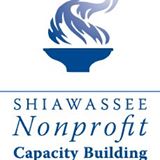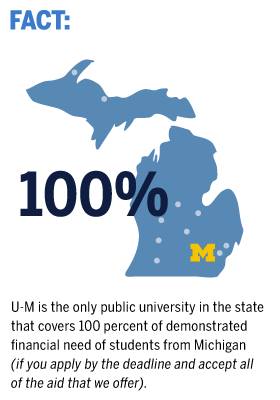Ar e you a board member, volunteer or staff member of a Shiawassee nonprofit organization? Then the upcoming workshops offered through the NonProfit Capacity Building program are for you. Designed to improve the effectiveness of your organization, the workshops will provide helpful ideas and advice about volunteer management, fundraising on-line, grant-writing and leadership at both the board and staff level. Workshops are three-hours long, offered at a variety of times, and include a meal. A schedule and description of workshops can be found on our “events” page. There is no charge for members of the Shiawassee Nonprofit Capacity Building Program to attend these workshops. This page describes the program and its eligibility requirements. Existing members are listed here.
e you a board member, volunteer or staff member of a Shiawassee nonprofit organization? Then the upcoming workshops offered through the NonProfit Capacity Building program are for you. Designed to improve the effectiveness of your organization, the workshops will provide helpful ideas and advice about volunteer management, fundraising on-line, grant-writing and leadership at both the board and staff level. Workshops are three-hours long, offered at a variety of times, and include a meal. A schedule and description of workshops can be found on our “events” page. There is no charge for members of the Shiawassee Nonprofit Capacity Building Program to attend these workshops. This page describes the program and its eligibility requirements. Existing members are listed here.
Financial Aid Workshop January 18
 Applying for financial aid is perhaps the most important, and most complex, task many a high school senior will undertake. To help academically talented students sort through this process, the Cook Family Foundation is holding a workshop on Monday, January 18 from 7-9 p.m. at the Baker College Welcome Center.
Applying for financial aid is perhaps the most important, and most complex, task many a high school senior will undertake. To help academically talented students sort through this process, the Cook Family Foundation is holding a workshop on Monday, January 18 from 7-9 p.m. at the Baker College Welcome Center.A representative from the University of Michigan Office of Financial Aid will provide important information about qualifying for financial aid, as well as some useful tips on making college more affordable. U-M is the only public university in Michigan to cover 100 percent of demonstrated financial need of in-state students (learn more here)
While the workshop will provide particular insight to financial aid from the University of Michigan, the presentation will be applicable no matter what four-year university a student ends up attending. The first step for any prospective college student is to fill out the FAFSA (Free Application for Federal Student Aid), the form used by all institutions of higher learning. To qualify for financial aid from UM, students and their families will also need to complete a CSS Profile.
Students and/or their parents are invited to attend the January 18 workshop. While it is not necessary to RSVP, please contact us if you have questions (989-725-1621 or bruce@cookfamilyfoundation.org). To keep up-to-date on financial aid, scholarships, and other UM information follow us on Twitter @GoBlueGoBruce
Nonprofit Partners in Capacity Building

Executive Directors of Shiawassee-based nonprofits (l to r): Helen Howard, Respite Volunteers; Tonya Avery, SafeCenter; Lynn Grubb, the Arc Shiawassee; Lauri Elbing, Friends of the Shiawassee River; Tom Cook, Cook Family Foundation; Kathy Brooks, Owosso Community Players; Piper Brewer, Shiawassee Arts Center; Mary Warner-Stone, Durand Union Station Incorporated; and Marlene Webster, Shiawassee Hope
Eight Shiawassee-based nonprofit organizations have achieved Partner status in the Cook Family Foundation’s NonProfit Capacity Building program. In recognition of this accomplishment, each community group has been awarded $5,000 in a special year-end grant.
“These nonprofits have demonstrated a commitment to improve their governance, their programs, and their capacity” said Foundation Executive Director Tom Cook. “We are proud to call them Partners”
The organizations now recognized as Partners are the Arc Shiawassee, Durand Union Station Incorporated, the Friends of the Shiawassee River, the Intersection of Owosso (Shiawassee Hope Project), Owosso Community Players, Respite Volunteers of Shiawassee, SafeCenter and the Shiawassee Arts Center.
The NonProfit Capacity Building program provides training and technical assistance to over 20 Shiawassee-based organizations (click here for more information). To achieve Partner status, over half of the board members of an organization attended one or more workshops on nonprofit governance, executive directors participated in bi-monthly peer learning sessions, and both staff and volunteers took part in coaching sessions with an expert from the Nonprofit Network, a Michigan consulting firm. Several of the organizations have also updated their strategic plan, made technology investments, or otherwise added capacity.
“We make services available to all Shiawassee-based nonprofits that have paid staff” said Tom Cook, “and we are confident that several more will achieve Partner status in 2016.” The NonProfit Capacity Building Program is currently being updated for 2016. Program revisions will be announced on this page in January.
“When our nonprofit groups are strong, our communities are healthier,” said Cook. “Nonprofits care for those most in need in Shiawassee County, promote our natural and cultural resources, and help us all be engaged citizens.”

